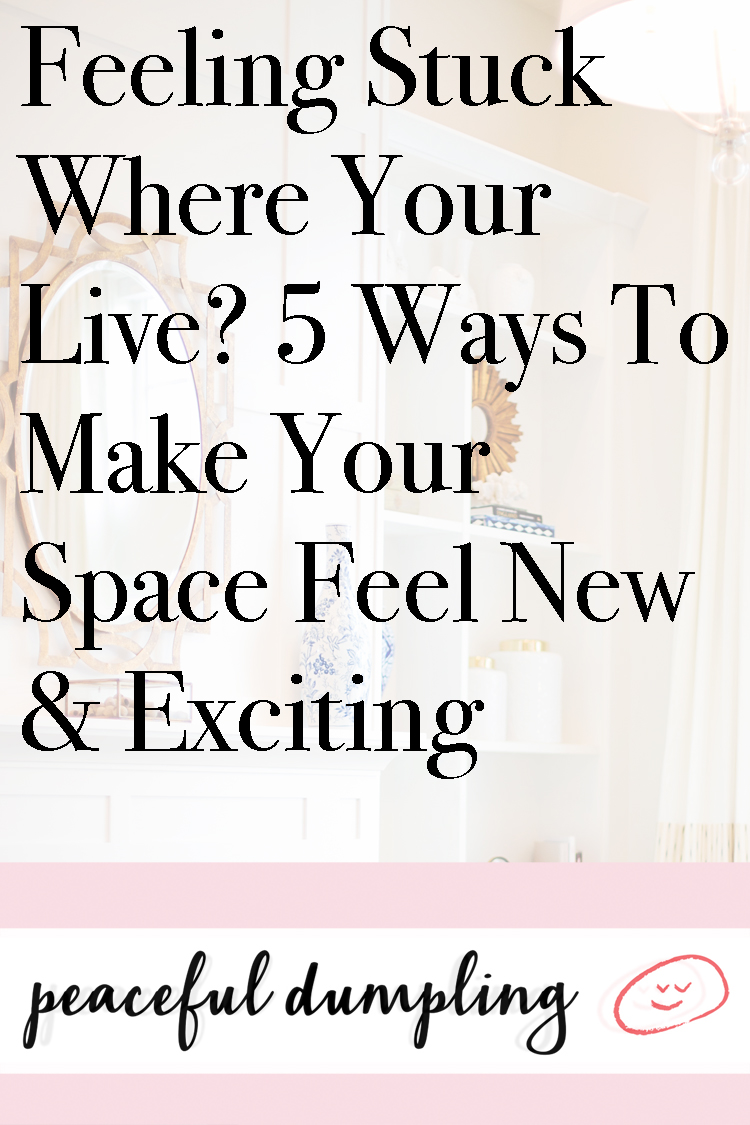
Wish you could pick up and move your home, like, now? Here’s how to feel like you have a new zip code without trading in your keys.
There are countless ways one can feel stuck in life: in a job you’re unsatisfied with, in a relationship that’s not serving you, in a diet or workout routine that’s not giving you the results you’d hoped for. But then there’s literally being stuck—in the physical place where you live, which is perhaps the worst of all. I recall feeling this way most of my college life, dreading returning to the dorm where I lived and studied and slept and bathed, which had strong repercussions on my overall wellbeing.
Since then, I’ve had comparatively better luck in my living quarters mainly because of the autonomy I had over where and with whom I lived (mostly, just moi). Living in New York City, I realized quickly that neighborhood is everything—each quasi-arbitrary corner possesses its own culinary, artistic, and demographic flavor. I found my niche on the Upper West Side, an area once considered the ultimate source of sketch (my mom, bless her heart, who grew up in Queens decades ago, nearly wept when I moved into my first apartment because she thought I’d be raped or shot or hit with some stray infected needle) and is now the epitome of “chi-chi” upper-middle-class-dom. I don’t boast a many-zeroed income by any means, but the quiet streets, where people stroll with bags from Zabars and Levain Bakery, suited my old soul just fine.
Until they just didn’t. The non-view outside my apartment’s one window has begun to feel like a one-way mirror in a police station more than an open, expansive view upon the opportunities of New York City. I’m apparently not alone in my frustrations with the confines of major metropolitan centers: millennials are increasingly moving to America’s smaller cities, where mortgages are lower and quality of life is higher. On the flip side, our entire generation is delaying “growing up” at all, choosing to live at home longer or finding unconventional roommate arrangements to save money.

An ad for apartment search engine Streeteasy, highlighting the calculus of finding your ideal home in NYC.
No matter what’s making you feel stir crazy where you live, however, the impulse (or even an intense need) to change your scenery doesn’t always yield immediate results. Many factors go into actually changing your address, from the intricacies of packing/shipping to working out the logistics of employment and relationships. However, if you’re itching to make your space over and can’t quite book a U-Haul tomorrow, there are intermediate changes you can make so that where you live feels like new. Try one or all of them, and you may just fall in love with your space all over again!
Expand your radius
Take a walking or extending driving tour of your city or neighborhood that goes beyond your normal routine. It’s easy to get stuck in the most efficient routes to your go-to stores, friends’ homes, or place of work, but simply turning left instead of a right one day may allow you to stumble upon the perfect little shop you never knew existed, or a beautifully landscaped block that will make you smile unexpectedly. Explore the hidden pockets and make a point of visiting them regularly to change things up.
Rearrange
You’d be surprised how many different ways you can configure 3 major pieces of furniture in a >200-square-foot space! I’ve twisted and turned and angled my furniture in every which way possible (I think…), and while some arrangements definitely worked better than others, each provided me a new perspective on the same four walls I live in. Simply reorienting how you eat, sleep, or watch TV can make the space you do it in feel completely different. Whenever I’m feeling restless about my space, I take the time to move at least one thing somewhere new—even if it’s a vase or pile of books. It makes you notice more and often inspires the next suggestion…

Take Inventory of Your Stuff
So much of what goes into how you feel about where you live involves what you live with. Studies show that having too many unnecessary possessions, including clutter or sentimental items that you can’t let go of but want to, seriously affects our stress levels, eating habits, decision-making capacities, and overall wellbeing. This notion extends to a broader notion of “home,” too, including your work environment, your commute, when and where you hang out with friends—anywhere you dwell and have regular experiences. So decluttering may involve scrapping people, inboxes, and to-do lists that are cramping your living style.
Change Your Schedule
When you always move the same way the same time each day, you can wear an easy and tired path through your home. But making small changes to when you’re at home and what you’re doing during those times gives those routines new life. For example, waking up earlier will let you experience the light in a new way; reading before bed in an armchair instead of falling asleep to Netflix in your bed makes your nighttime ritual a bit more calming and restorative. If your job is flexible, try working remotely so you’re home during the day and can squeeze in cooking, cleaning, or shopping on weekdays, alleviating pressure from weekend chores.

Get Away—Literally!
Need a break from your front door? Take a mini-break, as Bridget Jones would say, that lets you see a new location and get a breath of fresh air. If you’re seriously down the road of relocating, visit a place you’re considering moving to take in the day-to-day life; but a purely pleasure-based escape is also just as nourishing since it forces you to put aside your normal concerns and habits. Plus, men and women who travel internationally have been shown to have a lower risk of heart attack and increased levels of creativity and lower depression.

How do you find a new lease on your current living space?
Also by Jennifer: 5 Easy Pantry Staples You Should DIY—‘Cause Groceries Are $$$
Related: How to Make Your Apartment Feel Like Home
How To Make Your Small Apartment Feel Bigger
Get more like this–sign up for our newsletter for exclusive inspirational content!
__
Photos: Pexels; https://www.dexigner.com/news/30715
